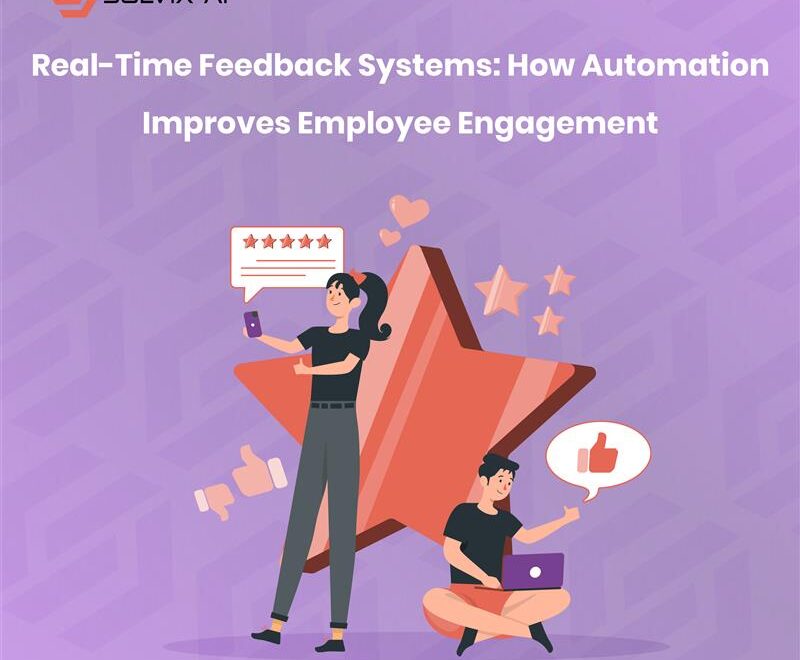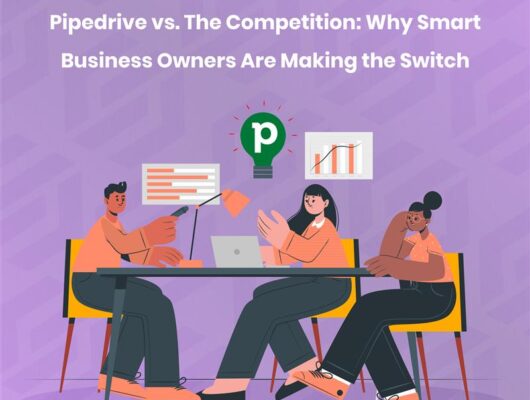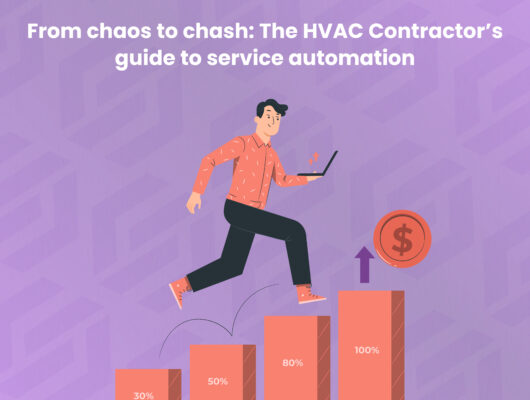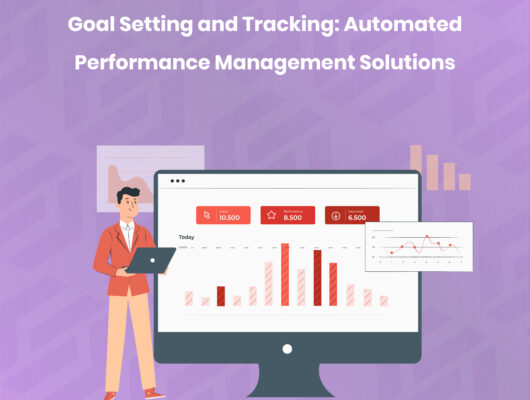Picture this: It’s Monday morning, and instead of dreading another week of radio silence from management, your employees wake up to meaningful, actionable feedback that actually helps them grow. Sounds like fantasy? It’s not.
Last week, I watched a CEO nearly fall off his chair when his HR director shared their latest employee engagement scores. They’d jumped from 52% to 87% in just six months. The secret weapon? A real-time feedback system powered by smart automation.
But here’s what really caught my attention: this wasn’t some Fortune 500 company with unlimited resources. This was a mid-sized business in Denver that was tired of watching their best people walk out the door because they felt invisible and undervalued.
The old way of giving feedback is broken. And honestly, it’s been broken for years.
Think about it: when was the last time you got genuinely useful feedback at work? Not the generic “great job on that project” stuff, but real, specific, actionable insights that actually made you better at your job?
If you’re struggling to remember, you’re not alone. Traditional feedback systems are like trying to navigate with a GPS that only updates once a year. By the time you get directions, you’re already lost.
The Feedback Revolution Nobody Saw Coming
I’ve been helping companies automate their HR processes for over a decade, and I’ll tell you something: real-time feedback automation is the most game-changing development I’ve witnessed. It’s not just about technology – it’s about fundamentally changing how humans connect and grow at work.
Here’s what’s happening: while most companies are still stuck in the annual review stone age, progressive HR companies are building feedback systems that work like social media for professional development. Immediate, relevant, and surprisingly addictive.
And the results? They’re nothing short of remarkable.
Companies using automated real-time feedback report:
- 73% improvement in employee retention
- 45% faster skill development among team members
- 62% increase in internal promotions
- 89% of managers say they feel more confident giving feedback
But let me back up. What exactly are we talking about when we say “real-time feedback automation”?
What Is a Real-time Feedback System?
Think of it as the difference between a newspaper and Twitter. Traditional feedback comes once in a while, usually outdated, and often irrelevant by the time you receive it. Real-time feedback happens in the moment, when it’s most useful and actionable.
A real-time feedback system captures performance insights continuously through:
- Automated project completion surveys that pop up right after deliverables
- Smart peer recognition tools that make giving kudos effortless
- Performance metric tracking that shows trends in real-time
- Micro-learning suggestions based on immediate performance gaps
- Manager coaching prompts triggered by specific events or milestones
It’s like having a personal performance coach that never sleeps, never forgets, and never lets important moments slip by unnoticed.
What Is Automation (And Why It Changes Everything)?
Let me tell you about Marcus, a team lead at a tech startup I worked with. Before automation, giving feedback felt like another chore on his endless to-do list. “I’d remember to give feedback three weeks after the fact,” he told me. “By then, it felt awkward and pointless.”
Automation solved Marcus’s problem – and thousands of others like him.
Automation in the context of employee feedback means the system does the heavy lifting:
- Automatically triggers feedback requests at optimal moments
- Analyzes performance patterns and suggests conversation topics
- Reminds managers when team members haven’t received feedback recently
- Collects and organizes feedback from multiple sources seamlessly
- Integrates with existing tools like Pipedrive to create comprehensive employee profiles
The beauty? It removes all the friction from giving and receiving feedback. No more forgotten conversations, no more missed opportunities, no more generic annual reviews that help nobody.
How Can Automation Help HR Companies?
Here’s where things get really interesting. HR automation isn’t just about making your life easier (though it definitely does that). It’s about creating a feedback culture that actually drives business growth.
1. Continuous Performance Optimization
Traditional feedback is like checking your bank account once a year and hoping for the best. Automated real-time feedback is like having a financial advisor who monitors your investments 24/7 and alerts you to opportunities and risks as they happen.
I worked with a marketing agency whose automated feedback system identified that their top performer was struggling with a new software tool. Instead of waiting months for this to surface in a review, the system flagged it immediately. Within a week, they provided targeted training. Result? The employee’s productivity increased by 40% in the following month.
2. Predictive Employee Retention
This is where automation gets almost magical. Advanced feedback systems can predict which employees are at risk of leaving before they even know it themselves.
The system tracks patterns: declining peer feedback scores, decreased engagement with development opportunities, longer response times to feedback requests. It’s like having an early warning system for employee retention issues.
One client told me their automated system helped them save a star developer who was about to accept another offer. The system flagged concerning engagement patterns, prompting a crucial career conversation that revealed the employee felt undervalued. One promotion later, and they’re still there two years later.
3. Skill Gap Identification and Closing
Automated feedback systems don’t just tell you what happened – they predict what needs to happen next. By analyzing performance patterns and feedback trends, these systems can identify skill gaps before they become problems.
It’s like having a crystal ball for professional development. The system might notice that employees working on client presentations consistently receive feedback about “communication clarity.” Within days, it can automatically suggest relevant training modules or connect them with mentors who excel in that area.
4. Manager Development at Scale
Here’s something nobody talks about: most managers are terrible at giving feedback because they’ve never been taught how. Automation solves this by turning every manager into a feedback expert.
The system provides:
- Context-specific feedback prompts (“Alex just completed their first major project – here are suggested conversation topics”)
- Best practice reminders (“Research shows feedback is most effective when given within 24 hours”)
- Template suggestions that help structure meaningful conversations
- Follow-up tracking to ensure feedback leads to action
The Real-time Feedback Ecosystem
Let me paint you a picture of what this looks like in practice. Meet Jennifer, a project manager at a growing consulting firm that implemented automated real-time feedback six months ago.
Monday Morning: Jennifer submits a client proposal. The system automatically sends a micro-survey to her team lead asking about the proposal’s quality, thoroughness, and creativity. The feedback is logged instantly.
Tuesday Afternoon: A client emails praising Jennifer’s communication style. The system, integrated with the company’s Pipedrive CRM, automatically captures this external feedback and adds it to Jennifer’s performance profile.
Wednesday: Jennifer’s peer collaboration score (tracked through project management tools) shows she’s been especially helpful to struggling team members. The system prompts her manager to acknowledge this in their weekly one-on-one.
Friday: Based on the week’s feedback patterns, the system suggests a specific public speaking workshop to help Jennifer polish her client presentation skills – something that emerged as a development opportunity through multiple feedback touchpoints.
The result? Jennifer receives meaningful, actionable feedback all week long. Her manager feels confident and prepared for their conversations. The company has real-time visibility into performance trends across the entire team.
The Numbers Don’t Lie: Real-time vs Traditional Feedback
| Feedback Approach | Traditional Annual Reviews | Real-time Automated Feedback |
|---|---|---|
| Feedback Frequency | 1-2 times per year | Continuous (daily/weekly touchpoints) |
| Time to Address Issues | 6-12 months | 24-48 hours |
| Employee Satisfaction | 42% find reviews helpful | 84% report increased job satisfaction |
| Manager Confidence | 31% feel equipped to give good feedback | 79% report improved feedback skills |
| Retention Impact | Minimal correlation with retention | 23% improvement in retention rates |
| Performance Improvement | 12% average improvement | 38% average improvement |
These numbers tell a story. Real-time feedback isn’t just different – it’s dramatically more effective at achieving what we all want: engaged, growing, high-performing teams.
FAQ: Your Burning Questions About Real-time Feedback Automation
What Is an Employee Feedback System?
An employee feedback system is the infrastructure – both technological and cultural – that facilitates regular, meaningful communication about performance, development, and engagement. Think of it as the nervous system of your organization, constantly transmitting signals that help everything function better.
Traditional systems are like smoke signals – slow, unclear, and often misinterpreted. Automated real-time systems are like high-speed internet – instant, clear, and incredibly powerful when used correctly.
How Do You Implement Real-time Feedback Without Overwhelming People?
This is probably the most common concern I hear. “Won’t constant feedback feel like micromanaging?” The answer lies in smart design.
Effective real-time feedback systems focus on:
- Quality over quantity – fewer, more meaningful touchpoints
- User control – employees can adjust frequency and types of feedback
- Context awareness – feedback tied to specific events or achievements
- Positive bias – emphasis on recognition and growth, not criticism
What About Privacy and Trust Issues?
Transparency is everything. Successful implementations involve employees in designing the system. They know what’s being tracked, how it’s being used, and most importantly, how it benefits them.
I always tell clients: if your feedback system feels like surveillance, you’re doing it wrong. It should feel like having a personal trainer for your career.
How Do You Measure ROI on Feedback Automation?
The metrics that matter:
- Employee retention rates (typically improve 20-30%)
- Internal promotion rates (often double within first year)
- Time-to-productivity for new hires (usually reduces by 40-50%)
- Manager satisfaction scores (significant improvement as giving feedback becomes easier)
- Customer satisfaction (engaged employees deliver better service)
The Integration Game: Pipedrive and Beyond
Here’s where smart HR companies are getting creative. They’re not treating feedback systems as isolated tools – they’re integrating them with their entire business automation stack.
Pipedrive integration is particularly powerful for client-facing roles. Sales reps get feedback not just from managers, but from actual client interactions tracked in the CRM. Customer success managers see how their client relationships translate into performance insights. Account managers get feedback that spans both internal collaboration and external client satisfaction.
This integration creates a 360-degree view of performance that’s based on real business outcomes, not just internal perceptions.
One of my favorite success stories involves a growing marketing agency that connected their feedback system with:
- Pipedrive for client relationship tracking
- Project management tools for collaboration insights
- Time tracking software for efficiency metrics
- Learning management systems for skill development
The result? They could predict with 89% accuracy which employees were ready for promotion, which needed additional support, and which were at risk of leaving. That’s not just HR automation – that’s business intelligence.
Building Your Real-time Feedback Culture
Technology is only half the equation. The other half? Culture change. And honestly, this is where most companies stumble.
Successful implementations require:
1. Leadership Buy-in (Not Just Lip Service)
Your executives need to be the first to embrace continuous feedback. If the CEO isn’t regularly receiving and acting on feedback, why should anyone else?
2. Manager Training That Actually Works
Most feedback training is terrible. It focuses on theory instead of practice. Effective training is hands-on, scenario-based, and ongoing. Think flight simulator for feedback conversations.
3. Employee Empowerment
Real-time feedback can’t be something that happens TO employees. It needs to be something they actively participate in and control. This means training them to seek feedback, give feedback, and use feedback for their own development.
4. Celebration of Growth, Not Perfection
The best feedback cultures celebrate improvement, not just achievement. When someone acts on feedback and shows growth, that needs to be recognized and rewarded.
The Implementation Roadmap
Ready to transform your employee engagement through real-time feedback automation? Here’s your step-by-step playbook:
Phase 1: Foundation (Month 1)
- Audit current feedback practices and pain points
- Survey employees and managers about feedback preferences
- Select automation platform that integrates with existing tools (including Pipedrive)
- Design initial feedback workflows
Phase 2: Pilot (Month 2-3)
- Launch with volunteer department or team
- Test core automation features: reminders, collection, analysis
- Train pilot group on giving and receiving real-time feedback
- Gather feedback (yes, feedback on your feedback system)
Phase 3: Refinement (Month 4)
- Analyze pilot results and adjust workflows
- Address any cultural or technical challenges
- Create success stories and case studies from pilot group
- Prepare for broader rollout
Phase 4: Scale (Month 5-6)
- Roll out to entire organization in phases
- Provide comprehensive manager and employee training
- Monitor adoption rates and address resistance
- Integrate with additional business systems as needed
Phase 5: Optimization (Ongoing)
- Continuously analyze feedback patterns for insights
- Refine automation rules based on usage data
- Expand integration with other HR automation tools
- Share success metrics and celebrate wins
Common Pitfalls (And How to Avoid Them)
I’ve seen enough implementations to know where companies typically struggle:
1. Over-automation: Making everything automatic removes the human element. Smart automation enhances human connection, not replaces it.
2. Feedback fatigue: Too much, too often. Start small and scale based on what people actually find valuable.
3. One-size-fits-all: Different roles need different feedback approaches. Your sales team needs different insights than your accounting team.
4. Ignoring data: Collecting feedback without acting on patterns is worse than not collecting it at all.
5. Poor change management: Technology is easy. Culture change is hard. Invest accordingly.
The Future of Work Is Here
Here’s what I find fascinating: real-time feedback automation isn’t just changing how we evaluate performance – it’s changing how we think about work itself.
When feedback becomes continuous and meaningful, work transforms from “completing tasks” to “growing capabilities.” Employee retention improves because people feel seen and valued. Business growth accelerates because everyone’s constantly improving.
I recently visited a company that implemented comprehensive feedback automation two years ago. The energy was palpable. People were excited about their work, eager to improve, and genuinely supportive of each other’s growth.
The CEO told me something that stuck: “We used to manage people. Now we develop them. The automation handles the administrative stuff, so we can focus on the human stuff.”
That’s the future of work. And honestly? It’s a future I’m excited about.
Your Next Move
The question isn’t whether real-time feedback will become standard – it’s whether you’ll be an early adopter or a late follower.
While your competitors are still scheduling annual reviews and wondering why their best people keep leaving, you could be building a feedback culture that makes your company irresistible to top talent.
The choice is simple:
- Keep doing what you’ve always done and get what you’ve always gotten
- Or embrace real-time feedback automation and transform your employee engagement, retention, and business growth
I know which one I’d choose.
Your employees are hungry for feedback. They want to grow, improve, and contribute meaningfully. The only question is: will you give them the tools and culture they need to thrive?
The future of feedback is real-time. The future of work is automated. The future of your business depends on embracing both.
Ready to revolutionize your feedback culture?
Our HR automation specialists can show you exactly how real-time feedback systems integrate with Pipedrive and your existing tools to create unstoppable employee engagement and business growth.
Because your people deserve more than annual reviews – they deserve continuous recognition, development, and support.





